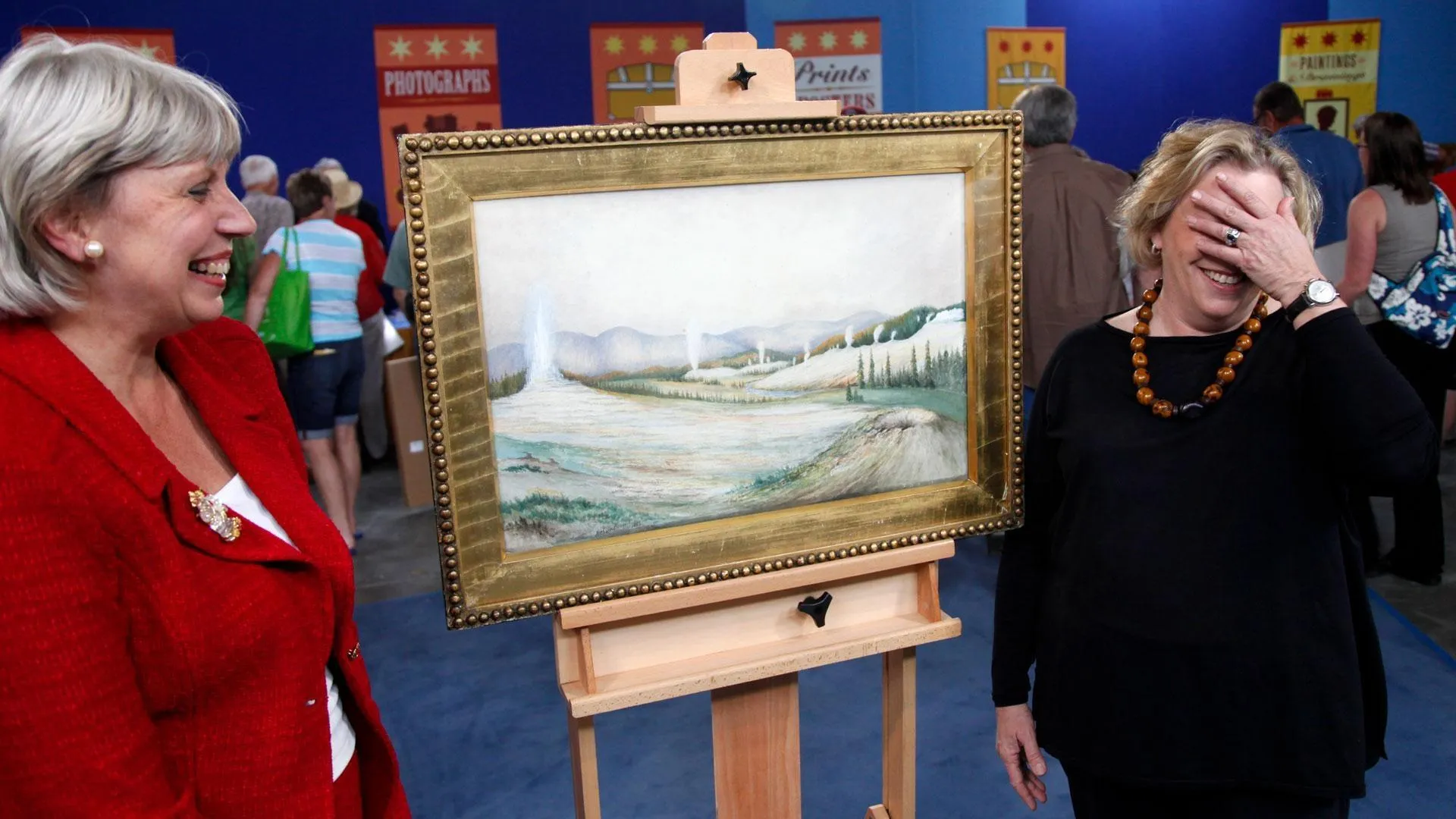GUEST: My dad was a career military officer, and he was stationed in either Goose Bay, Labrador, or Newfoundland. I think it was Goose Bay, though. And my mother bought this piece from the Eskimos north of that location. And so it's been in our family for about 70 years. And I loved it so much over the years, my mother gave it to me, and I was always enchanted with this piece. My mother mentioned to me one time, she thought that they used stockings to make this. But I don't know how true that is. It was just a comment.
APPRAISER: This is called a Grenfell missionary rug. There was a guy named Dr. Wilfred Grenfell, G-R-E-N-F-E-L-L, who was a British physician that came there on a mission to Newfoundland in the late 19th century. The main reason he came at that point was because the natives were having horrible health problems, especially in the wintertime, and he was trying to help with that. But also a lot of them were in abject poverty. They had no way to make money, especially in the wintertime. And he looked in their houses, and he saw these real finely woven rugs. Now, the ones they had there were more traditional designs. These were English and Scottish settlers. And he came up with the idea that they could weave these really fine rugs like this. But he came up with the idea to use designs, like that depicted what was going on in their villages.
GUEST: Their life.
APPRAISER: And this one has everything-- ships, the compass, it's got a house, got a couple of native figures. And as they went along, progressing with the production of these, they would actually have kits they would give the villagers so they could put them together. And the stocking idea comes from the fact that they didn't have that many scraps of fabric lying around. And supposedly a lot of people sent their stockings there, and that's what they used for the white.
GUEST: So it is stockings.
APPRAISER: Yeah, well, part of it. They had a saying that "If your stocking runs, let it run to Labrador."
GUEST: Oh!
APPRAISER: Because that way they could use them to produce these rugs. They made lots of different designs, different sizes. In 1930 a rug like this would have sold for about maybe four dollars to as much as eight dollars.
GUEST: Wow.
APPRAISER: I did some research online, and I checked with a couple of my colleagues at the table, and this is one of the more desirable patterns, because it has so much going on in it.
GUEST: Yeah.
APPRAISER: And we felt like the value on this probably would be in the neighborhood of $4,000 to $6,000.
GUEST: Mm-hmm.
APPRAISER: And that would be the high end of that would be, like, an insurance value.
GUEST: Okay.
APPRAISER: And there have been others that have sold at auction for as much as $4,000. So that kind of gives you a range.
APPRAISER: Okay, wow. Well, that is amazing. I'll treasure it even more now. (laughing)








